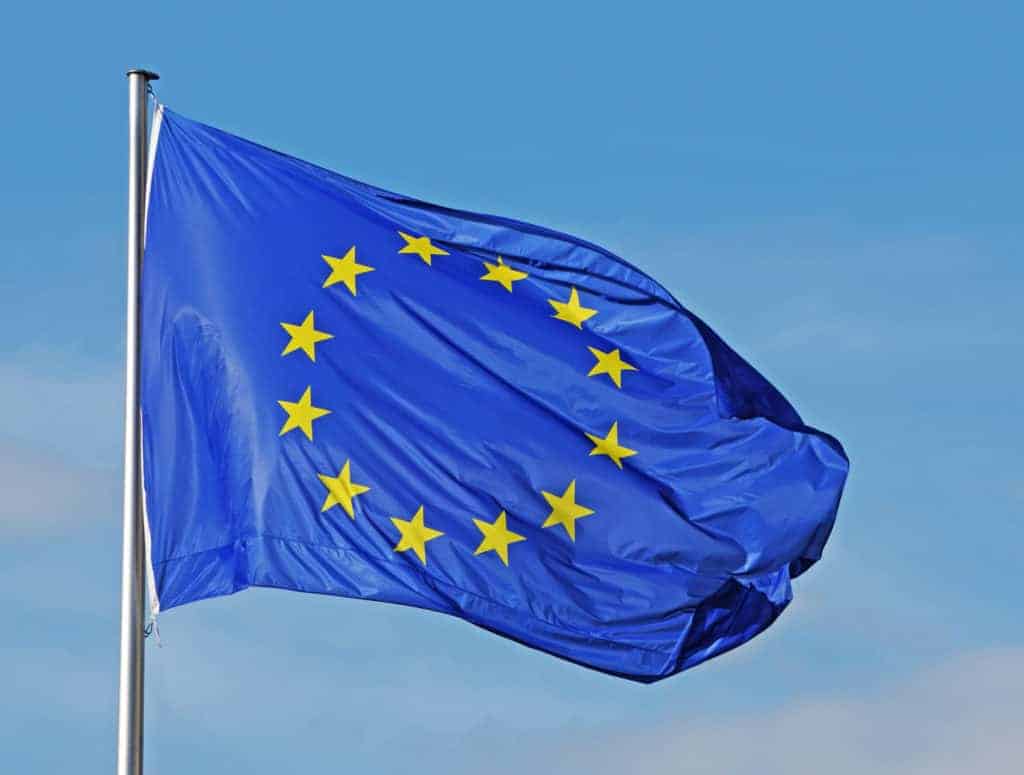In 2017, changes to the regulation of medical devices were announced by the EU. Under the new guidelines, existing initiatives would be scrapped in favour of a new framework, known as the MDR. With the MDR coming into effect on May 26th 2020, here’s an informative guide to the Medical Device Regulation.
What is the MDR?
MDR stands for Medical Device Regulation. Prior to May 2017, medical devices used in the EU were regulated according to the Medical Devices Directive (93/42/EEC) and the Active Implantable Medical Devices Directive (90/385/EEC). In 2017, the EU published a new directive, known as the MDR, which will replace the existing guidelines, paving the way for a new era in regulation. Although proposals were released in 2017, the EU stipulated a transition period, and the full effects of the change will not come into force until May 2020. This period of time was set aside to enable manufacturers and those working in the medical industry to adapt their devices and products and upgrade technical identification and labelling, and risk and quality management processes in order to comply with the updated requirements.
The MDR has been under discussion for a prolonged period of time and its origins can be traced back to 2012. Now, with the deadline of May 2020 fast approaching, it’s essential for businesses, professionals, and manufacturers to be aware of the most significant changes to the medical device industry in recent years and to understand the potential implications for UK brands post-Brexit.
This new regulation is designed to build on previous initiatives to make them suitable for a modern world that is ever-changing. As technology advances and evolves, and the way we acquire, use and consume products changes, the MDR has been drawn up to establish a robust framework that champions health and safety without restricting innovationÍ[1].
What does the MDR mean for the medical device industry?
The EU’s new MDR directive was introduced to improve the way medical devices are identified, embrace and take advantage of modern technology, and enhance transparency and safety. There are various changes, with one of the most significant related to labelling and identification. Under the new guidelines, every new device must now have its own specifications and a Unique Device Identification (UDI).
This new regulation is more robust than previous initiatives. Nothing has been removed in terms of manufacturer requirements, but there are new guidelines included in the MDR. Requirements are more stringent, and there is a shift towards a life-cycle safety approach.
There are various adjustments and additions that will undoubtedly have an impact on the medical device industry. One of the most significant is the introduction of a Unique Device Identification System, which is outlined in article 27 of the MDR. This move is designed to improve transparency and enable devices to be tracked and traced easily. If a product is recalled over safety concerns, for example, the UDI system will make it much simpler for manufacturers or retailers to trace potentially hazardous products. Health institutions will be required to store UDI information, but the transition phase for this particular element of the MDR is slightly longer, with a deadline of May 2021. Another modification is the use of an expanded, more accessible form of the European Data Bank for medical devices, known as Eudamed (European Database for Medical Devices). With the new MDR proposals, Eudamed will be used to store much more data than it does under the previous directives[2].
The key changes that impact manufacturers pertain to data that previously had been published by linking a device or a product to a competitor’s version. It is no longer permitted to share that data and proclaim that your product is similar. You must now provide specific details about every product, and from May 2020, products must feature a UDI[4]. Another change is risk management and assessment, which is employed during the life cycle of a product. The EU directive encourages taking risk management as far as possible, which is likely to represent a step up from procedures previously used by manufacturers.

What can manufacturers do under MDR?
The MDR states that the regulations are EU-wide, however, there are additional considerations for manufacturers of single-use devices, as local standards and frameworks also play a role. Some countries may have more stringent measures in place than others, and manufacturers will need to be aware of the regulations in place in the countries in which they operate.
A modified definition of medical devices has been updated and amended by the EU Medical Device Regulation, which includes the following:[5]:
- Medical purpose devices
- Active implantable medical devices
- Non-medical devices
- Cosmetic devices: for example, non-corrective contact lenses and equipment used for liposuction
For those who manufacture devices that are not directly designed for medical purposes, the revised regulations may seem slightly confusing, as the directive is rather vague in this area. There is an extensive list of measures available on the directive website and some of the most significant requirements for manufacturers include:
- Article 10: Employing risk and quality control management systems, performing conformity assessments, conducting clinical evaluation, and recording technical documentation.
- Article 15: each manufacturer should appoint a named person responsible for compliance.
- Article 18: manufacturers of specific implantable devices will be required to provide patients with an implant card.
- Articles 19 and 20: once conformity checks have been completed, manufacturers should produce a certificate of conformity and ensure all devices are CE marked.
The MDR and Brexit
The situation surrounding Brexit is somewhat uncertain, as the anticipated leaving date has been moved and modified over the course of the last 12 months. Brexit is expected to occur on 31st October 2019, but at the time of writing, it is unclear whether the UK will leave with or without a deal. For businesses, this means that there is likely to be a degree of uncertainty. In terms of the EU MDR directive, manufacturers are expecting the MDR to apply to the NHS after Brexit. In January 2019, the MHRA (Medicines and Healthcare products Regulatory Agency) released this statement:
“Through the no-deal statutory instrument, which will amend the Medical Devices Regulations 2002, the UK will have a regulatory system in place on 30 March 2019, which will mirror all the key elements contained in Regulations 2017/745 on medical devices (MDR) and 2017/746 on in vitro diagnostic medical devices (IVDR) and which will be brought into force in line with the transitional timetable being followed by the EU for the full application of those two Regulations.”[6]
Since this statement was published, the anticipated deadline for Brexit has passed, and a new timeframe has been established. The UK is now expected to leave at the end of October 2019, but the sentiment hasn’t changed, and the medical device industry in the UK will continue to be regulated according to the key stipulations of the MDR and IVDR.
It’s natural for manufacturers, healthcare providers and institutions to have questions about what happens after Brexit, and as the situation is fluid, the best course of action is to keep up to date with updates and statements released by the authorities.
Preparing for the MDR
The most significant deadline for the medical device industry is May 2020. Manufacturers will be allowed to keep existing certifications until they expire, but any major changes after this date will require earlier modification. With May 2020 not too far away, it is beneficial for manufacturers to be prepared and to follow these steps to ensure they’re compliant by the time the deadline comes around:
- Kim Trautman recommends starting preparations by conducting gap analysis to determine how far away from the new directive the company currently is in terms of meeting updated requirements. Once these gaps have been identified, they can be addressed[7]
- Review existing quality and risk management and changes to technical documentation processes.
- Read good practice guidelines.
- Review current product labelling techniques.
- Consider your staffing structure: have you got individuals with the skills you need to transition seamlessly, or are you looking to recruit new members of staff to oversee change and ensure compliance?
- Look into technological features, programmes, and systems that could benefit you and make the transition simpler, for example, quality management systems and a Virtual Data Room.
The MDR and Virtual Data Rooms
The MDR framework has been introduced to modernise existing initiatives and create a structure that is fit for purpose in 2020 and beyond. While there are benefits, there is no doubt that the new directive represents a significant undertaking for compliance officers and manufacturers operating within the medical industry. New regulations, endless streams of data and a deadline that is fast approaching mean that a simple, stress-free, seamless transition is desirable. One way of achieving this is by using Imprima VDR. We offer an incredibly secure, permission-based VDR platform ideally suited to continually update and share sensitive documentation with buyers of your medical devices.
To find out more about our innovative VDR platform and
eliminate compliance headaches, don’t hesitate to get in touch.
[1] “Manufacturers MD | Internal Market, Industry, Entrepreneurship and ….” https://ec.europa.eu/growth/sectors/medical-devices/getting-ready-new-regulations/manufacturers-md_en. Accessed 20 Aug. 2019.
[2] “European database on medical devices (EUDAMED) | Internal Market ….” https://ec.europa.eu/growth/sectors/medical-devices/new-regulations/eudamed_en. Accessed 20 Aug. 2019.
[4] “Health Institutions.” https://assets.publishing.service.gov.uk/government/uploads/system/uploads/attachment_data/file/643768/MHRA_Health_Institutions_One_Pager__final_.pdf. Accessed 20 Aug. 2019.
[5] “(MDR) and the in vitro diagnostic medical device regulation.” https://assets.publishing.service.gov.uk/government/uploads/system/uploads/attachment_data/file/640404/MDR_IVDR_guidance_Print_13.pdf. Accessed 20 Aug. 2019.
[6] “The latest guidance on the implications of a no-deal Brexit – Health ….” 11 Apr. 2019, https://www.hra.nhs.uk/about-us/news-updates/latest-guidance-implications-nodeal-brexit/. Accessed 20 Aug. 2019.
[7] “Q&A | EU MDR: What does it mean for the medical device industry?.” 26 Feb. 2019, https://www.nsf.org/newsroom_pdf/nsf_ph_eu_mdr_what_does_it_mean_medical_device_industry.pdf Accessed 20 Aug. 2019.







